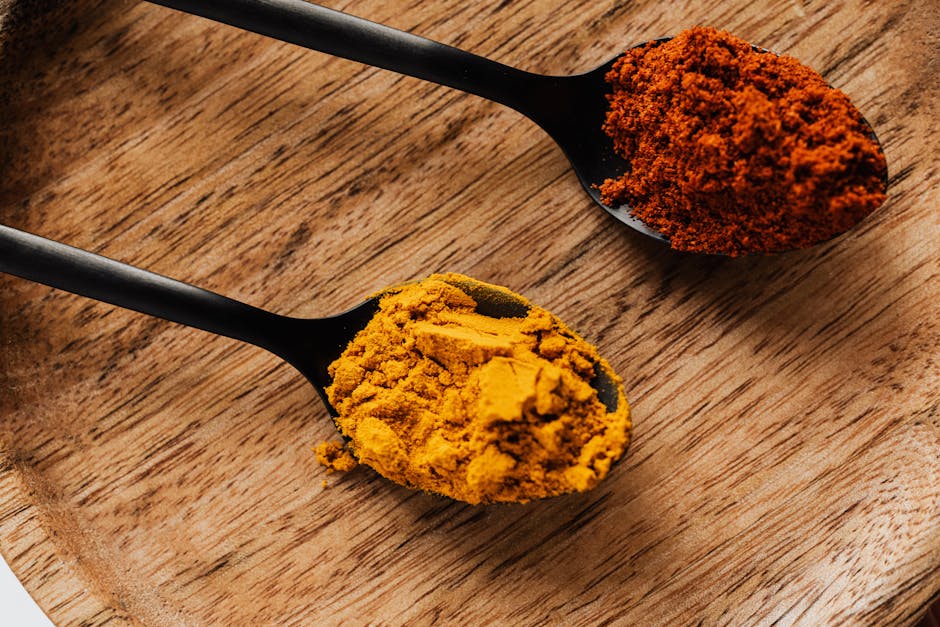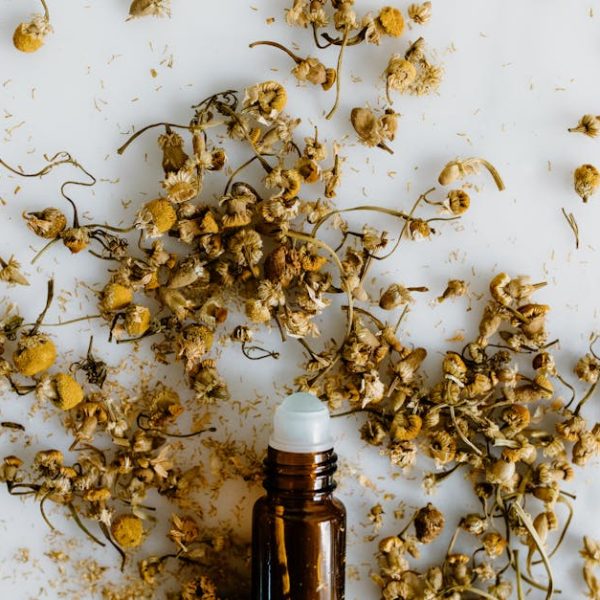Welcome to the world of Eastern spices where health and flavor intersect. To start our exploration, let’s focus on Turmeric – a vibrant yellow-orange spice originating from India and Southeast Asia. Known for its warm, bitter taste, turmeric forms an essential part of oriental cuisines. But besides its culinary uses, it’s renowned in the traditional medicine realm, especially Ayurveda, where it’s utilized for its plethora of health benefits.
From top wellness gurus to everyday people seeking natural remedies, turmeric has managed to carve an esteemed reputation. Key health benefits include:
- Potent anti-inflammatory properties: Helps soothe symptoms linked to arthritis and inflammatory bowel disease
- Strong antioxidant characteristics: Boosts body’s own antioxidant enzymes to fight off harmful free radicals
- Natural Antiviral qualities: Aids in combating various infection-causing viruses
Pro Tip: Enhance your daily dishes by adding 1/2-1.5 teaspoons of turmeric. For better absorption, combine it with some black pepper and healthy fats.
Diving Deeper: The Power of Curcumin
Having acquainted ourselves with turmeric, it’s time to discuss the star compound found within, termed Curcumin. While turmeric contains about 3-5% of Curcumin, this polyphenol is responsible for most of the spice’s health properties. Furthermore, it is also the source of turmeric’s intense golden color.
Although curcumin constitutes a small part of turmeric, its benefits are not insignificant:
- Powerful anti-inflammatory and antioxidant effects: Comparable to the potency of some drugs, without the side-effects
- Boosts brain-derived neurotrophic factor (BDNF): Supports improved brain function and a lower risk of brain diseases
- Leads to beneficial effects on factors known to play roles in heart disease
- Useful in treating symptoms of Alzheimer’s and arthritis.
Best Practice: Due to its low bioavailability, it’s important to consume curcumin with agents that aid absorption. Pair…
Understanding Their Key Differences
While turmeric and curcumin are often used interchangeably, they offer unique benefits and uses. Although turmeric plays host to curcumin, the latter contains the majority of health benefits linked with the spice. However, bear in mind that curcumin is only a small part of turmeric– roughly 3%.
| Turmeric | Curcumin | |
|---|---|---|
| Benefits | Anti-inflam., antioxid., antiviral, etc. | More potent version of effects listed for turmeric |
| Usage | Used as a spice in cuisines or consumed directly | Consumed in supplement form for targeted benefits |
| Rate of absorption | Low | Extremely low without the aid of absorption enhancers |
Pro Tip: Choose Turmeric for overall wellness and Curcumin when…
(To be continued…)
Unlocking Potencies and Dosages: Turmeric and Curcumin
Knowing about turmeric and curcumin is one thing, but putting their power to practical use requires knowledge of their dosage and best consumption forms. For healthy adults, the recommendations differ based on whether you’re looking at turmeric used as a spice or curcumin in a concentrated form like capsules.
For Consumption as Spice
As a food spice, turmeric can be consumed liberally without significant concern for side-effects. The University of Maryland Medical Center recommends:
- 1.5-3.0 grams of the cut root daily
- 1-3 grams of the dried powdered root daily
For Dietary Supplements (Curcumin)
When considering dietary supplements, generally recognized as safe (GRAS) frequency is:
- Standardized powder: 400–600 mg, 3 times daily
- Fluid extracts (1:1) 30–90 drops per day
Remember, every individual is unique, and what works for one may not work for another. Consult your healthcare provider before starting on a turmeric or curcumin-rich regimen.
Dosage Checklist:
Ensure safe usage of these substances by ticking off the following considerations:
- Consultation with a doctor
- Source quality products from trustworthy providers
- Pair your curcumin with black pepper or fats for improved absorption
- Monitor for any side effects or allergies
- Ensure no conflict with existing medication
Pro Tip: Turmeric-tinted smoothies and curcumin-infused lattes are great ways to incorporate these into your daily routine. Drinking them first thing in the morning may provide a healthful kick-start to your day!
Words of Caution: Pitfalls and Warnings
While turmeric and curcumin have much to offer, it’s also crucial to acknowledge their potential pitfalls. Overconsumption or incorrect intake can lead to unwanted side effects or limit their effectiveness. Certain health conditions or medications can also interact adversely with these substances.
Potential Side Effects and Risks
Consumed moderately as a spice, turmeric is generally safe. But high doses, especially in supplement form, might cause:
- Nausea
- Dizziness
- Diarrhea
- Liver problems in rare, extreme cases
Furthermore, those with gallbladder problems, kidney stones, diabetes, or pregnant and breastfeeding women should be cautious with turmeric/curcumin consumption.
Interactions with Medication
Turmeric/curcumin might not mix well with:
- Anticoagulants: Might strengthen their effect leading to excess bleeding
- Medications that reduce stomach acid: Could interfere and stimulate the stomach to produce more acid
- Diabetes medications: Could increase the risk of low blood sugar
Best Practice: To avoid any unintended effects, always start with a small dose, observe the response, and then gradually increase the quantity. Never exceed the recommended dosage, and ensure you give your body a break between prolonged consumption periods.
Remember, while turmeric and curcumin hold potential towards contributing to a healthier life, they should be used as part of a balanced diet and a wholesome lifestyle!
Key Takeaway:
- Turmeric, a classic spice in Asian cuisine, is recognized for its numerous health benefits including anti-inflammatory, antioxidant, and antiviral properties.
- Curcumin, a compound in turmeric, is responsible for most of these health benefits. It’s only about 3-5% of turmeric’s composition, but still significantly improves brain function and aids digestion.
- Remembering the difference between turmeric and curcumin is essential, with the former used more for general wellness and the latter for targeted health benefits.
- Managing the dosage and consumption method for both is important for effective absorption and maximum benefits.
- But taking this too far can lead to side effects or health risks – everything in moderation and always consult your healthcare provider.
End your journey into the world of turmeric and curcumin with the positive realization that these natural remedies can improve your health when consumed correctly. Stay proactive about understanding the sources of your health supplements and proceed with knowledge and care to rejuvenate your body the natural way.
FAQs
Q: How can I incorporate turmeric into my diet?
A: Turmeric can be added to your meals, smoothies, or even consumed as a tea. Try to combine it with black pepper and healthy fats for better absorption.
Q: How long does it take for curcumin to work?
A: It differs for everyone, and the effects may take several weeks to notice depending on your current health status and the condition you aim to improve.
Q: Can I use curcumin for skincare?
A: Yes, curcumin is known for its anti-inflammatory and antioxidant properties which can benefit your skin. However, ensure to do a patch test before applying any turmeric or curcumin-based product on your face.
Q: Can I give turmeric or curcumin to my children?
A: It’s generally safe to incorporate turmeric into your children’s diet, but restrict the consumption of curcumin supplements to adults unless advised by a pediatrician.
Q: Is it safe for pregnant women to consume curcumin?
A: Although turmeric is safe, curcumin supplements should be avoided during pregnancy or breastfeeding unless recommended by a healthcare professional.
Don’t hesitate to continue exploring our site for more insightful health and wellness articles. Share this post with others to spread the knowledge, and keep coming back for more!






